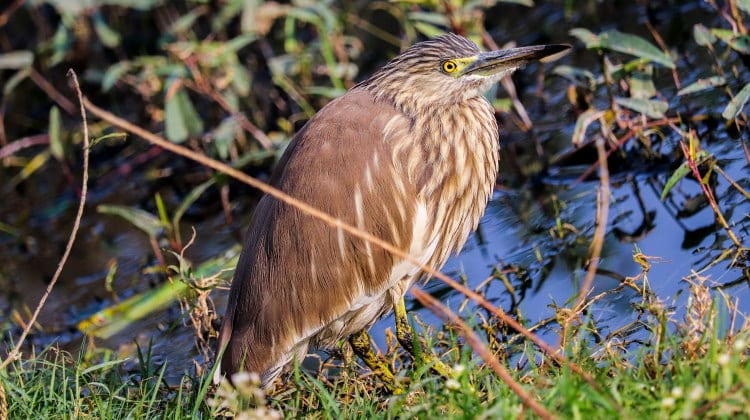Do Sandhill Cranes Mate for Life?
Roaming the earth for millions of years, Sandhill cranes are equally famous for their long migratory movements and their long-term pair bonding. So yes, it is true that Sandhill cranes are known to find a mate and pair for life.
Nowadays, like many human couples, Sandhill cranes are known to ‘divorce’ and not maintain monogamous relationships. For the sake of their colts, young offspring, pairs of Sandhill cranes raise young via bi-parental care and take up to 1-3 years to begin mating.
In this time, the pair are testing their behavioral compatibility and creating a positive relationship that will subsequently have a positive effect on their reproductive success.
However, if nature is not able to run its course and a pair is unable to reproduce, ‘divorce’ is known to occur in pairs. But first, let’s understand their complex social behaviors and how these lead to long-term pair bonding.
Why Do They Pair for Life?
Ultimately, Sandhill cranes pair for life purely for the reproductive and evolutionary success of their offspring.
Like many other species, Sandhill cranes millions of years ago realized that staying together and maintaining a strong pair bond offers their young a greater safety net.
As well, by staying together in a bi-parental care relationship, studies prove that both parents share equal responsibility for their offspring in a harmonious relationship.
The relationship between male and female cranes is said to be unified as both will work to build a nest and share the responsibility of incubating eggs.
Behavioral compatibility is something that is very important and maintains Sandhill Cranes life-long relationships and is built upon parental investment behaviors and pair bond duration.
Monogamy:
The foundation of Sandhill cranes life-long pair bonding is monogamy. This is when one male and one female join to rear at least one brood which is very common among bird species.
Sandhill cranes in particular undergo perennial monogamy in which they stay together throughout all seasons of the year, not just during breeding seasons specifically.
Without a doubt, successful reproduction further strengthens cranes monogamous long-term pair bonding where they reproduce once a year laying between one to three eggs each brood.
Pair Formation:
During their spring migration, Sandhill cranes undergo pair formation and exhibit courtship behaviors.
In order to attract the attention and lure a mate, male cranes perform a courtship dance incorporating 8 recorded courtship displays between potential and already bonded pairs.
3 of these are displayed to specifically attract a mate and include an upright wing stretch and head pumping both horizontally and vertically. It is said to begin with the male throwing some vegetation into the air and inviting the female to dance.
Once the female accepts the said invitation, the male spreads its wing and arches its head backward nearly touching its back and producing a bulging call.
Following these movements, the cranes are said to dance by bowing and leaping around vertically. Once the male has the attention of the female, both will exhibit courtship movements that the rest of the flock often joins in on.
Paired cranes also exhibit courtship behaviours whilst bonded as well. These include non-aggressive unison calls, bill up, and copulation that further strengthens a pair’s bond and reproductive success.
The unison calls will be made numerous times throughout their pairing and will always be produced by the male and followed by the females shorter and softer response.
A gradual process over time, Sandhill cranes will pair between 2 or 3 years of age and do not start reproducing until at least 5 years old. By the age of eight, nearly all birds are paired and mate for life.
When & Where Do They Mate?
In early spring as the birds make their way to their breeding grounds, single cranes will start courting.
Once a pair is set and after a few years, the pair will locate a nest site usually in isolated wetlands and marshes.
They also prefer areas of large growing vegetation so they can hide their nest from predators. They will build their lifelong nest out of vegetation such as cattails, burr reeds, bulrushes, and grasses and add to it over time.
Both mates gather the material each year and throw it over their shoulders to create a mound. The female then stands on the mound and arranges into a nest.
Mate Loss:
Although most pair-bonded Sandhill cranes last until the loss of a mate or until both sadly die, a form of divorce can occur earlier on in their relationship.
As reproduction is proven to strengthen pair bonds, which makes sense evolutionarily, if a pair is unable to reproduce or loses their offspring their bonding is said to break apart.
Female Pair Bonds:
No, female Sandhill cranes do not form pair bonds similar to that of a male and female.
But, two females can perform courtship displays to each other in preparation for the males to present themselves and begin the courtship behavioural displays.
Conclusion:
So, it’s understood that Sandhill cranes do mate for life unless they cannot reproduce together or die earlier than expected. But, it’s considering why they have maintained these monogamous relationships over millions of years that’s important.
In order to raise and keep their offspring safe which they produce every year, the pair are said to stay together in a unified relationship.
To obtain such a bi-parental relationship, the cranes go through thorough courtship behavioural displays that initiate and sustain their life long mating relationships.





